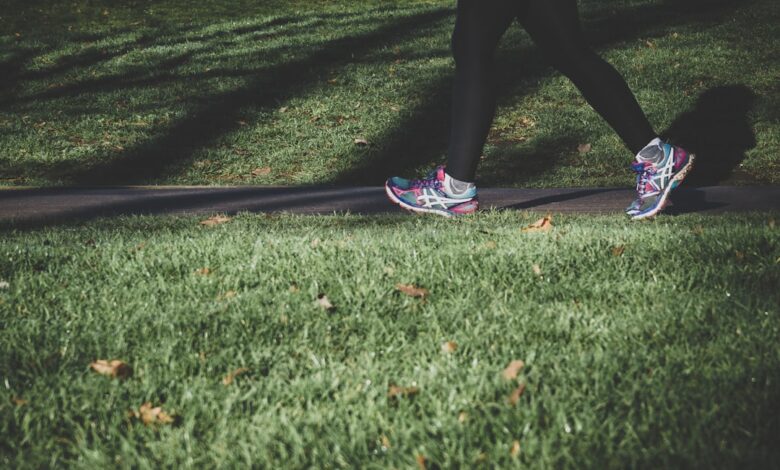Walking 30 Minutes A Day: Shocking Weight Loss Results

Hey there! As a certified wellness coach, I often get asked about the simplest, most effective ways to kickstart weight loss. And honestly? One of the best things you can do is lace up those sneakers and get moving – specifically, walking for 30 minutes every day. You might be surprised by the “shocking” results you can achieve!
Let’s be real: the idea of intense workouts can be intimidating. But walking? Walking is something most of us can do. It’s low-impact, doesn’t require any special equipment (besides comfy shoes!), and can fit easily into your daily routine. The key is consistency, and walking 30 minutes a day is a fantastic, achievable goal.

The Weight Loss Magic of Walking
So, how does walking lead to weight loss? It all comes down to burning calories. When you walk, your body uses energy, and that energy comes from the calories you consume. If you burn more calories than you eat, you start to lose weight. Thirty minutes of brisk walking can burn anywhere from 100 to 300 calories, depending on your weight and pace. Over time, these calories add up!
But it’s not just about the calorie burn during your walk. Walking regularly can also boost your metabolism, which means you’ll burn more calories even when you’re resting. Plus, it helps build lean muscle mass, and muscle burns more calories than fat. It’s a win-win-win!
More Than Just Weight Loss: The Amazing Health Benefits
The benefits of walking extend far beyond just weight loss. It’s a fantastic way to improve your overall health and well-being. Think of it as an investment in your future self!
Here are some of the amazing things walking can do for you:
- Improved cardiovascular health: Walking strengthens your heart and reduces your risk of heart disease, stroke, and high blood pressure.
- Lower blood sugar levels: Regular walking can help regulate blood sugar and improve insulin sensitivity, which is especially important for people with diabetes or prediabetes.
- Stronger bones and muscles: Walking is a weight-bearing exercise that helps build and maintain bone density, reducing your risk of osteoporosis. It also strengthens the muscles in your legs, hips, and core.
- Improved mood and reduced stress: Walking releases endorphins, which have mood-boosting effects. It can also help reduce stress, anxiety, and symptoms of depression.
- Increased energy levels: Believe it or not, regular walking can actually boost your energy levels. It improves circulation and delivers more oxygen to your cells, making you feel more awake and alert.
- Better sleep: Walking can help regulate your sleep-wake cycle, making it easier to fall asleep and stay asleep.
Tips for Maximizing Your Walking Workout
To get the most out of your 30-minute walk, here are a few tips to keep in mind:
Warm-up: Before you start walking, take a few minutes to warm up your muscles with some light stretches, such as leg swings, arm circles, and torso twists.
Maintain a brisk pace: Aim for a pace where you’re breathing harder than usual but can still hold a conversation. This is generally considered a moderate-intensity workout.
Engage your core: Keep your abdominal muscles engaged as you walk. This will help improve your posture and stability.
Swing your arms: Bend your elbows at a 90-degree angle and swing your arms naturally as you walk. This will help you burn more calories and improve your coordination.
Stay hydrated: Drink plenty of water before, during, and after your walk to stay hydrated.
Cool down: After your walk, take a few minutes to cool down with some gentle stretches, such as hamstring stretches, calf stretches, and quad stretches.
Make it fun! Listen to music, podcasts, or audiobooks while you walk. Walk with a friend or family member. Explore new routes. The more you enjoy your walk, the more likely you are to stick with it.
Making Walking a Part of Your Daily Routine
The biggest challenge isn’t the walking itself, it’s making it a habit. Here are some ideas to seamlessly incorporate walking into your day:
Walk during your lunch break: Instead of sitting at your desk, take a 30-minute walk outside.
Walk to work or school: If possible, walk or bike to work or school instead of driving or taking public transportation.
Walk the dog: If you have a dog, take them for a longer walk than usual.
Take the stairs instead of the elevator: This is a simple way to get more exercise throughout the day.
Park farther away from your destination: This will force you to walk a little bit farther.
Walk while you talk on the phone: Instead of sitting down, walk around while you’re on the phone.
Set a reminder on your phone: This will help you remember to walk each day.
Safety First: Important Considerations
While walking is generally safe, it’s important to take some precautions to prevent injuries.
Wear comfortable shoes: Make sure your shoes fit well and provide good support. Avoid wearing shoes with high heels or slippery soles.
Be aware of your surroundings: Pay attention to traffic, pedestrians, and other obstacles. Walk on sidewalks or designated walking paths whenever possible.
Dress appropriately for the weather: Wear layers of clothing in cold weather and lightweight, breathable clothing in hot weather. Wear sunscreen and a hat to protect yourself from the sun.
Listen to your body: If you experience any pain, stop walking and rest. Don’t push yourself too hard, especially when you’re first starting out.
Consult with your doctor: If you have any underlying health conditions, talk to your doctor before starting a new exercise program.
Frequently Asked Questions
What if I can’t walk for 30 minutes straight?
No problem! Break it up into shorter intervals. Try three 10-minute walks or two 15-minute walks throughout the day. The key is to accumulate 30 minutes of walking over the course of the day.
What if I have joint pain?
Start slowly and gradually increase your walking time and intensity. Consider walking on softer surfaces, such as grass or a track, to reduce impact on your joints. You might also find that using walking poles helps to distribute your weight and reduce stress on your joints. Talk to your doctor or a physical therapist for personalized advice.
How long will it take to see results?
Everyone is different, but you may start to notice some changes within a few weeks. You might feel more energetic, sleep better, and see some weight loss. The more consistent you are with your walking routine, the faster you’ll see results.
Do I need to walk every day?
Aim for most days of the week, but don’t beat yourself up if you miss a day or two. Consistency is key, but rest days are also important for recovery.
Can I combine walking with other exercises?
Absolutely! Walking is a great complement to other forms of exercise, such as strength training, yoga, or swimming. A well-rounded fitness program is always the best approach.
So, there you have it! Walking 30 minutes a day is a simple, effective, and accessible way to achieve weight loss and improve your overall health. It’s not a magic bullet, but it’s a powerful tool that can help you reach your goals. Start today, and get ready to be amazed by the “shocking” results!
Related Posts
| 10 Kg Gone! Here’S Exactly What I Did |
| How I Lost 5 Kg Just By Walking Every Day |
| Can Walking Alone Melt Your Belly Fat? Find Out Here! |
| Lose Weight By Walking: The Exact Steps That Work |



